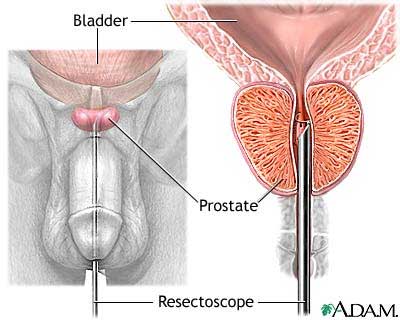
The symptoms of prostate cancer could or could not manifest a man suffering from this condition. As a type of cancer slow development, some men who have the disease could even don’t know they have it. that prostate cancer is most common in older men, there are those who die from other causes or diseases without even diagnosed with cancer of the prostate until their bodies are discussed in the table in the autopsy. Especially in the early stages, symptoms are almost non-existent in patients with this disease.
The symptoms of prostate cancer may or may not manifest a man suffering from this condition. is a kind of development slow cancer, some men who have the disease would not even know they have it.given that prostate cancer is much more common in older men, there are those who die from other causes, or with the same disease diagnosed with cancer of the prostate until their bodies are examined in the autopsy .surtout table in the early stages, symptoms are virtually non-existent in patients with this disease.
for men who met with symptoms of prostate cancer, the most common are frequent urination, tendency to urinate during the night, difficulty to maintain a flow of urine, pain during urination, and blood in the urine. Prostate cancer can also trigger sexual function problems such as difficulty in achieving an erection and painful ejaculation.if the condition is advanced or in other parts of the body such as the bones and lymph node metastases, additional symptoms will be more likely to occur. these include bone pain, particularly in the spine, ribs and basin. if cancer has spread to the spine, it can compress the spinal cord which can lead to weakness in the legs and the same urinary and fecal incontinence.
The symptoms of prostate cancer are incredibly similar to those of other disorders of the prostate such as benign prostatic hyperplasia (BPH) and prostatite.Pour determine the reason behind the symptoms, a thorough review is necessary. if the cancer is detected its early, the patient will much more chance to treat and maintenance. a number of strategies to detect prostate cancer have developed in recent years and two of the most common prostate-specific antigen (PSA) blood test and digital rectal examination (CRD).
PSA is a protein which is produced in the prostate glands released in rather short rises in traffic sanguine.Si a patient of a condition of the prostate, more PSA is released into the blood until he reaches a level where it can be detected just.PSA levels below 4 ng/mL are usually considered as normal, while levels between 4 and 10 ng/mL are considered intermédiaires.Néanmoins, in some cases, men with a prostate cancer still record low levels of PSA.In cases like these, a rectal examination is usually done to supplement the PSA test results.
Dre is a procedure in which the doctor inserts a gloved, finger lubricated in the rectum to examine the size, shape and texture of the prostate and identify any irregularities.it is also normally used by urologists to distinguish between cancer and cancer such as BPH and prostatitis conditions.
While the PSA test and Dre have largely used as screening techniques, doctors warned that these diagnostic measures are accurate step 100 %.Autres factors could cause the high level of PSA in blood mania or cause irregularities in the prostate.Dans mind, patients are requested to step down in these tests but have a long, detailed discussion with their doctor first.
Obtaining screening for cancer is desirable if prostate cancer common problems are experienced by the patient.Il is also important to remember that result by other conditions, not all cancer symptoms.
View the original article here